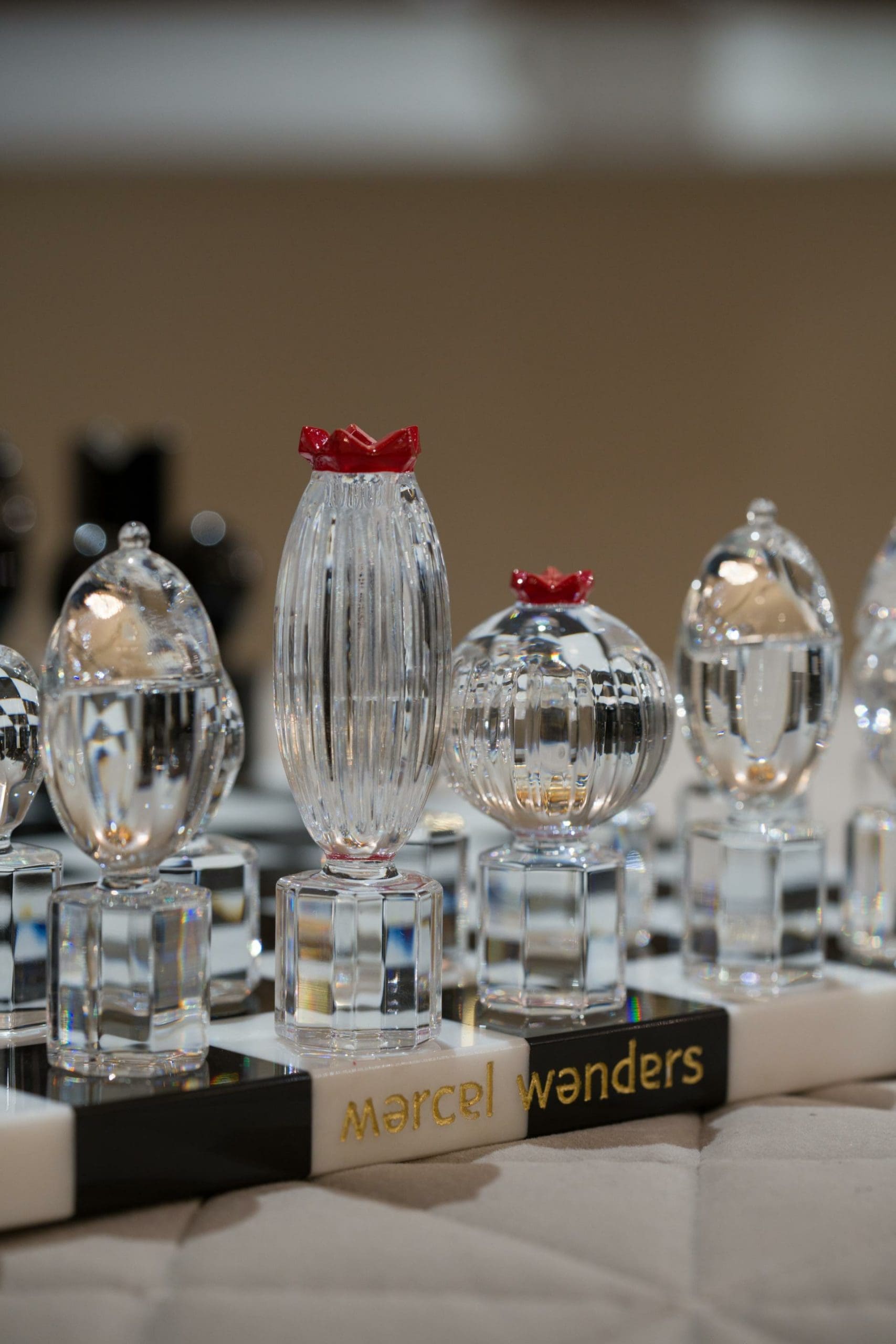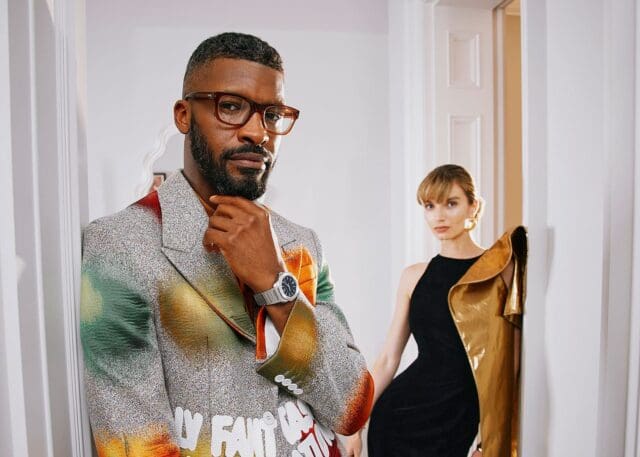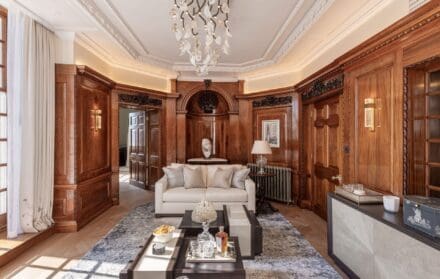
Marcel Wanders on the enduring appeal of flamboyant design
"Nothing grows old faster than the new"
Marcel Wanders, tall, Boho-dapper and chatty, leans back in one of his chairs to ponder the question: are there any designs he looks back on and wishes he hadn’t gone through with? “Well,” says the 56-year-old, “I was still in design school and did this one thing – I won’t say what it was exactly, because it really deserves to be lost in space – and this company went ahead and made it. I was super happy about this of course, but then I was still at design school and didn’t know anything. And there was another project a few years ago I shouldn’t have done but it was either that, or let go eight people. It was a shitty project. But that’s it – not bad for 25 years on the job, right?”

Wanders has survived, in a sense, in spite of himself. Or at least in spite of doing what to marketing types would seem plain crazy. He may be one of a handful of designers whose name has come to transcend his products – for their distinctive signature, marrying decoration, humour and often high-tech production methods – but he is also the designer who modelled a vessel on, as it were, a particularly explosive nasal emittance, and then called it the Snotty Vase; or who worked out a way of effectively suspending rope in aspic, making it hard and forming it into his Knotty Chair: or a way of covering inflated party balloons with carbon fibre to produce, appropriately, the world’s lightest chair. Such designs are instantly recognisable and, since – unlike, say, the endless Eames rip-offs – they’re almost impossible to copy, they’re also highly collectable. Mid-century modern his designs are not. Unless you mean mid-21st century.
“I think modernism is an outmoded way of thinking about design,” Wanders offers, speaking from the London showroom of the design agency-cum-retail-venture Moooi, of which he’s also co-owner and leading an international roll-out.
“Modernism just doesn’t reflect the way we live now. It always puts forward this idea that the past is irrelevant to tomorrow – and tomorrow is all that matters. But the past is part of who we are. When I was young even to think about decoration was so not what designers did. I went to Giulio Cappellini [founder of the Italian furniture makers of the same name] with this idea of ‘new antiques’, which is what I wanted to make, and the company was subsequently excluded from a design fair because it was no longer seen as being ‘modern’. It was crazy. But why shouldn’t we make connections with old or traditional products? They’re beautiful and can be made relevant.”

Curators seem to think so: his designs form part of the permanent collections of New York’s Museum of Modern Art, London’s V&A and, naturally enough, Amsterdam’s Stedelijk Museum. The Dutchman graduated from the School of Arts Arnhem in 1988 and hasn’t looked back since. He made his name through Droog, the Dutch design collective that produced the Knotty Chair. But he has since designed some 1,700 pieces for the diverse likes of Flos, Boffi, B&B Italia and Moroso. In 2019 alone he unveiled a porcelain chandelier for Lladro, a sofa and chair for Poliform, a lighting collection for Barovier & Toso, a rocking chair, room divider and vase for Louis Vuitton and a wallpaper collection for Londonart, among other projects.
You could never call Wanders unproductive. But that such brands want to work with him is a sign of his status in the design world now. It’s not bad for the student who was expelled from the prestigious Design Academy Eindhoven, before setting up a studio of his own, quickly finding a distinctive voice.

Certainly, for all that many of his designs strike some as ‘wacky’, Wanders, has demonstrated that he is just as comfortable designing with restraint, or in accordance with the aesthetic of his client, or with a hint of wit but without the showiness of novelty. Among other recent furniture pieces, for example, is the Ant chair, in which a wedge of comfy upholstery is suspended on seemingly too spindly legs; or the Cyborg Daisy, with its polycarbonate base, aluminium frame and interchangeable back section; or the BFF modular sofa, which takes the capitone technique of deep buttoned upholstery and blows up the scale so that one fragment becomes a full module. Such pieces work, of course, but in their playfulness they’re also pleasing on the eye.
“Well function is fundamental to design,” comments Wanders. “If something doesn’t function it’s a bad product. I certainly get frustrated by things that aren’t functional. Design has to be visible when something functions because you only tend to notice it when it doesn’t. A house has to function but if that’s all it does you don’t love it. And that’s true for lots of things. You can buy a functional chair for €11 and if you pay more than that you’re not paying for something else. People aren’t stupid. Obviously a €500 chair isn’t about function. We only want just function from the things we don’t love.

“There was a time when design just wasn’t interesting to most people. It was super exciting to engineers, but for everyone else it was a matter of ‘who cares?’. We don’t care about elevator music. We care about Bach. And design was elevator music,” he adds. “But slowly design became less objective and more subjective. Whether you like an object or not, it’s more the product of an individual person making decisions about things. That’s what makes it interesting.”
Like, for instance, snot. Wanders chuckles at the thought – as old as it is now, its irreverence still makes it one of his favourite designs (“it’s a bit of a strange piece to me,” he says. “Well, for everyone I guess…”). Not that Wanders lets any old idea come to fruition. Unsurprisingly, successful product design is not only the ability to travel a long and often torturous road from first sketch to production line model, but to do so in a way that makes commercial sense, which, at first, snot may not. In 2014 Wanders completed an MBA precisely because he felt he needed to understand the business trajectory of a design – that a great idea need not necessarily mean it should still go into production – as well as he understood its aesthetic or function.

“People say you should just focus on your talents, but that’s stupid,” he argues. “I make things and I want people to have them. And that means business. That’s the only way to get design to people. So I figured the better I am at business, the better designer I’ll become – to make things that make the client happy, me happy, the world happy. The cool thing about design is that there’s no reason for the process to stop until you do like the result. And I love to find that last piece of the puzzle that falls into place and then – boom, it’s done. By the same token you become aware that you’re kind of becoming a brand. And I don’t want to be a brand. If you follow the rules brands have to follow you can’t be a designer anymore, at least not without making the same thing over and over again. And that’s being a shitty designer.”
That’s something few could say of Wanders. Indeed, he wants to keep making things – “real things” – that will still be around in decades to come. It’s that idea of ‘new antiques’ again. That too, until these more recent, austerity years perhaps, also cut against the zeitgeist. For a maker of such relentlessly new designs, Wanders finds the ideas of outmodedness and disposability disagreeable ones. He wants things that grow old gracefully, intriguingly.
“I’ve always liked the idea of making things that last forever, but not necessarily in the sense of being unbreakable, more psychologically,” he says. “Most people throw stuff away not because it’s broken but because their relationship with that object is broken. I remember a fellow design student created this textile and as it wore away with use it revealed a pattern underneath. And I just loved that. It made me think about how poor we are at accepting that things get old, especially since design is fixated on the shiny, clean and new. Nothing can have a patina, nothing can have a crack. But nothing grows old faster than the new, so I like to make designs that are old to start with. It makes for pieces that the people who like them are connected to for longer. That’s proper durability.”









